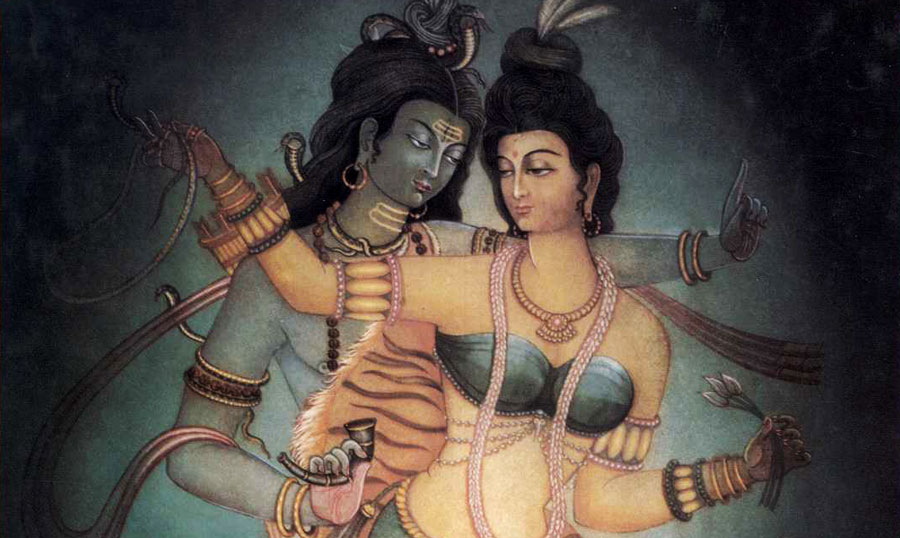
Editor's Note: Lorin received his Ph.D. in Social Science from the University of California at Irvine in 1987. His doctoral dissertation was about the language meditators come up with to describe their experiences. In other words, the maps they make to navigate their inner worlds. His Master's Degree work focused on the hazards of meditation and the crisis points in a meditator's development.
Both his Master's and Doctoral research were based on an 8-year period in which he sought out meditators of all types: Zen, Christian, Buddhist, Vipassana, Kundalini, TM, Sikh, Hindu, Tibetan, Jewish, Kaballah, Wicca, Native American, Theosophist, Arcana, Agni Yoga, Hatha Yoga, Raja Yoga, Bhakti Yoga, Brain Wave Biofeedback, Autogenic Training, Neurolinguistic Programming, Ericksonian Hypnosis, Gestalt, Charltte Selver Sensory Awareness, Feldenkrais Awareness Through Movement, Shamanism, and others.
He eventually settled upon the Vijnana Bhairava Tantra, one of the earliest teachings on yoga and meditation. The name, loosely translated, means “The terror and joy of realizing oneness with the Soul.”
It is from the oral tradition, meaning that it was chanted and memorized for generations, and seems to have appeared as a written text in about 800 AD. The Bhairava Tantra is a conversation between The Goddess Who is the Creative Power of the Universe, and the God who is the Consciousness That Permeates Everywhere. For short, they call each other Devi and Bhairava, or Shakti and Shiva. They are lovers and inseparable partners, and one of their favorite places of dwelling is in the human heart.
We are delighted to launch his regular series on Sutra Journal staring with this beautiful essay
Click here to read Part Two, Beloved I am Listening, in the January edition of Sutra Journal.
I first met the Vijnana Bhairava Tantra in 1968, when I was 18 and working in a physiology lab at the University of California. The lab was doing research
on meditation, and in a staff meeting one afternoon, one of the other assistants read a page from the first English translation of the text, done by Swami
Lakshman Joo and Paul Reps. Upon first hearing a few sentences, I fell in love. The words sang to me, transmitted an electric awakening and thus began a
love affair that has continued for 47 years now. The meditative practices discussed in the Vijnana Bhairava Tantra have been my guide and inspiration, and
every day the beauty of the text excites me anew.

About the Vijnana Bhairava Tantra
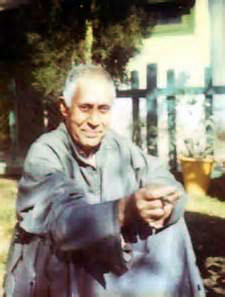
Swami Lakshmanjoo
This text appeared in Kashmir around AD 800, as far as we can tell. Before that, it may have been handed down through the oral tradition, which means that
it was memorized and chanted for generations. In ancient texts such as the Rig Veda, the word tantra refers to the technology of weaving - ‘a loom, the
warp’. There is the image of stretching or weaving threads in patterns across the framework of a loom. Metaphorically, a tantra is a tapestry of knowledge
weaving together the threads of yoga technique. This tantra is a compendium of yoga meditation instructions, set as a conversation between lovers. Its
focus is on full-body spirituality and accepting every breath, sensual experience, and emotion as doorways to deep and intimate contact with the energies
of life. In the 20th Century, Swami Lakshmanjoo of Kashmir was a prime custodian of the text, and taught it to many disciples: Paul Reps, Lilian Silburn,
Jaideva Singh, John and Denise Hughes, and Alexis Sanderson.
The conversation begins with Devi, The Goddess, tenderly asking, “Beloved, tell me, how do I enter more deeply into the reality of the universe?” The
Sanskrit of her first words are to me the most beautiful phrase I have ever heard, in any language:
Shrutam deva maya sarvam rudra yamala sambhavam
(śrutaṁ deva mayā sarvaṁ rudrayāmalasambhavam.)

In reply, Bhairava describes 112 techniques for becoming enlightened through everyday life experience. Each of these techniques is a way of attending to
the rhythms, pulsations, and sensuousness of the divine energy that we are made of and that flows through us always. As we engage with these meditation
techniques, we are alerted to the presence of the sacred that permeates our bodies. All of these methods involve savoring the incredible intensity
underlying the most common experiences. They work by activating the senses, and extending the range of the senses further into the inner and the outer
world. The basic dynamics of life - breathing, falling asleep, waking up, walking, loving - are all used as gateways to alignment and enlightenment.
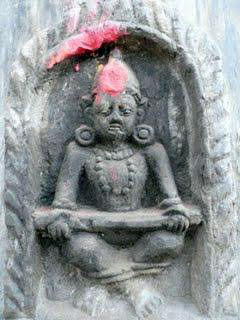
The 112 practices described in the Vijnana Bhairava Tantra are vast in scope, playful, intimate, and full-bodied. There are techniques of pranayama (breath
awareness), kundalini energy awakening, mudra (gestures), mantra (instrumental words or words of power and love), bhavana (creative meditations), and japa
(repetition of prayers). There are also many informal practices mentioned. Again and again the text encourages us to throw our delightful awareness into
intense experience (kṣip – ‘to throw, cast, send, dispatch, to move hastily, to throw a glance, to direct the thoughts upon.’) Any experience we long for
or accidentally find ourselves in the middle of, can be utilized as a doorway into awakening. “Are you longing for sex? Come on in – this is a doorway. Do
you live for dancing? That is also a doorway. Is music your passion? Go for it. Do you want to be alone in nature? That is a path. Are you stuck in a
rainstorm in the middle of the night? Take this as an invitation to really wake up. Is partying with great food and drink and a circle of friends your
greatest pleasure? This is a doorway to consciousness indeed. Are you angry or jealous? Those are stunning doorways. Are you terrified, running in panic,
or exhausted? Those are also portals to awakening. Are you tired of yoga and meditation techniques? You can just do nothing, that is also a doorway.”
The Vijnana Bhairava Tantra is framed as a conversation between the Goddess Who Is the Creative Power of the Universe and the God Who Is the Consciousness
that Permeates Everywhere. For short, they call each other Devi and Bhairava, or Shakti and Shiva. They are lovers and inseparable partners, and one of
their favorite places of dwelling is in the human heart. One of the meta-messages embedded in the text is The Goddess and her Beloved saying to us,
“No matter where you are in human experience,
whether you are ecstatic, lonely, lost, in pain, or in delight,
we are right here inside your most intimate experience,
join with us whenever you want.
We are closer than your breath.”
This Version of the Text
Each of the 112 doorways is described in a verse of 32 syllables, set forth in a classic Sanskrit meter known as anustubh (anuṣṭubh – ‘to praise after, to
follow in praising’, a kind of meter consisting of four padas or quarter-verses of eight syllables each.) Into each verse, which takes about 14 seconds to
chant, are layers and layers of meaning, jokes, puns, and images that point to sensuous experience. The language of the text abounds in earthy humor and
sexual innuendo. When Shiva describes the Yoga of Kissing in verse 70 the word he uses is lehana. Usually translated as ‘kissing’, the actual definition
includes ‘the act of licking, tasting, or lapping with the tongue’. To lovers, licking is an utterly different word than kissing. When monks and nuns
translate this word, of course they edit out the juiciness. When Devi uses the word, bindu, it means ‘a detached particle, drop, globule’, and ‘a mark made
by the teeth of a lover on the lips of his mistress’. Everywhere in this text, the Sanskrit lexicon is used with superb skill to indicate nuances of
meditative experience. Sanskrit is gloriously polysemous, (poly, ‘many’ + sema, ‘sign’). There are multiple layers of information reverberating in each
word, and each layer evokes realms of wonder and awe.
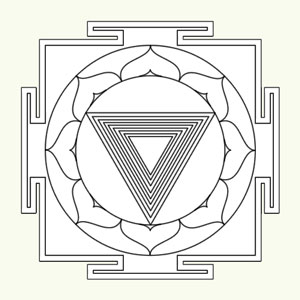
The language is coded as densely as if you said in English, “BB King, Clapton, Hendrix, Paige”. That is eight syllables, and each one or two evokes a
style, a set list, a series of legendary, era-defining performances by these adept guitar players, and the awakening that the music evoked in the
listeners. Or think of these eight syllables: “Bach, Beethoven, Wagner, Mozart.” Worlds of revelatory beauty evoked in a few words.
In each verse of the Vijnana Bhairava Tantra they were texting or tweeting to the future: “Here is the greatest thing I have ever learned. I have encoded
it so there is not one extra syllable, one extraneous thought. It’s as perfect, polished, purified, consecrated – as saṃskṛta, as I know how to make it. My
prayer is that this message makes it through to you intact, you who will be born in a distant time and place.”
For example, in one of the verses, Shiva is describing a mantra practice, and uses the word pluta, ‘floated, floating or swimming in, bathed, overflowed,
submerged, covered or filled with, protracted, prolated or lengthened, flown, leaping, a flood, deluge . . .’ This is an exquisite expression of the
experience of meditating with a mantra, especially as attention shifts from verbal pronunciation to subvocal speech, then to the energy impulse of the
sound as it dissolves into oceanic silence. You can obtain these sorts of descriptors by interviewing modern mantra yoga practitioners and asking them what
they are experiencing. Those who know how to meditate deeply with sound in the way described in this verse often say, spontaneously, “I feel flooded by the
mantra, floating with it, bathed in the sound.”
The usual translation of pluta is simply 'protracted’. While it is true that in certain stages of practice the mantra does become protracted -
Aaaaaaaaaaaaaaa Uuuuuuuuuuuuu Mmmmmmmmmmmmmmmmmm, there are many other subtle sensory experiences that occur, and these are hinted at extensively in the
rich metaphoric language of the text. Therefore I prefer to use as much of the full semantic range of each word as I can fit onto the page without
cluttering up the flow. Sanskrit words are often defined in the Monier-Williams Sanskrit-English Dictionary with a series of five or ten images, and we can
accept these as pointing to embodied sensory experience.
One of my main techniques in creating the versions of the text that I call The Radiance Sutras is simply to use the full semantic field of each word. What
I attempt to do is let as many of the images in the Sanskrit as possible, find their way into sentences in English, and in this way convey some of the
humor and juiciness (rasa) of the original. Rasa, by the way, is a word with vast semantic range: it’s basic sense is ‘juice’ - of plants or fruit, and
also‚ ‘the best or finest or prime part of anything, essence, marrow, liquor, drink, syrup, elixir, potion, nectar, semen, taste, flavor, love, affection,
desire, charm, pleasure, delight’. Rasa is also aesthetic relish – ‘the taste or character of a work, the feeling or sentiment prevailing in a work of
art’.
Another polysemic Sanskrit word used in the text is nitya, often translated as ‘eternal’. For the first decade I was involved with this tantra, I was
totally bored by the word nitya, because I was accepting this narrow range of meaning. ‘Eternal’ was just not an interesting concept to me. But I was
delighted to discover the listing in the Monier-Williams, which is more personal: ‘innate, native, one’s own, continual, perpetual, eternal, constantly
dwelling or engaged in, intent upon, devoted or used to, the sea, the ocean’. When I read that, I got it – ‘native of eternity. A denizen of the eternal,
at home in the ocean of eternity’. Emerson said, “Every word was once a poem.”
With Sanskrit, there is a sense that the words remember
they were once cognitions, startling insights by a seer,
and then they were sung as an expression of wonder.
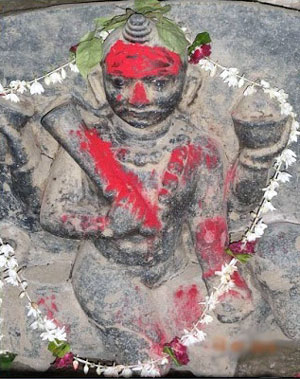
When I first began exploring the text as a teenager, friends would ask me to share with them what I was learning about how to meditate. I knew nothing
about how to teach meditation, so I would ask them to describe to me their own natural meditative experiences. Then I would simply listen, and after half
an hour or an hour, usually they would be speaking from inside their native experience. Then together we would browse through Lakshman Joo and Paul Reps’
translation, to see what verse reminded them of their own spontaneous experiences. In this way, I learned that virtually everyone has had some taste of the
juice, some flirtation with the ecstatic practices the Vijnana Bhairava is singing about. When we would read the Lakshman Joo and Paul Reps translation in
Zen Flesh, Zen Bones, or the translation of Lilian Silburn, or Jaideva Singh, there would be a flash of recognition, “Aha. Yes. I know that experience. It
calls to me.”
Over the past decades, it has been my great privilege and honor to have spent thousands of hours in this way, listening to meditators describe
moment-by-moment what they are experiencing, as part of various research projects at the University of California. One surprising finding is that when
meditators are in the midst of one of the doorways – one of the 112 practices mentioned in the text – the Sanskrit of the corresponding verse often feels
familiar and intimate. For example, one of the meditations is to listen to stringed instruments, and the word used in the stanza is tantri (tántrī) – ‘the
wire or string of a lute, the strings of the heart, any tubular vessel of the body, sinew, vein’. In this one word of two syllables, there is a wealth of
metaphors pointing to the technology of stringing a thread or a string between a wooden frame, for weaving fabric, or weaving a tune, and also the
thrilling experience of feeling one’s heart strings vibrating. Sanskrit is intrinsically poetic and evocative.
I was surprised and a bit scared when the thought occurred to me to do a fresh version of the text, but it felt like a request. So I began to live with the
text in a new way, wondering how you could say one of the stanzas in English. I began by reading the Sanskrit of the text over and over and meditating with
the sound of the words as I slowly learned the full semantic field of each word. It can take a month to become saturated with just one stanza of 32
syllables, because the meaning of each word is so deep and vast. Gradually the text sang itself into form, and I would generate twenty to fifty versions of
each stanza, seeking to let the aliveness of the Sanskrit sing itself into English.
Tantras, in the words of Gavin Flood, are “not simply passive texts but are performative, used in life transforming practices” (The Tantric Body p. 4). To
paraphrase Flood, the text is brought to life in the act of reading and inward performance, and in the act of sharing and outward performance. When we
read, if we engage with the text, that is an inward performance. When we share with others the meanings we find, that matches our experiences, that is an
outward ritual.
This is a performance-oriented version of the Vijnana Bhairava Tantra. It is meant to inspire practice and is written in such a way that when reading it
quietly to yourself, you may feel invited in to a practice, and become more intimate with yourself. You may find yourself in the midst of a practice just
in reading. This is antar yoga, where antara is 'interior, intimate, the interior part of a thing, Soul, heart, supreme soul’. Feel free to speak it out
loud, share it with a friend or student, jump up and dance, jump in and do one or more of the practices.
Sanskrit is a song of experience. Its words are rich in meaning, with many images and metaphors, both sensual and spiritual. The English used in The
Radiance Sutras comes from the images and metaphors in the Sanskrit of the text, which is luscious, evocative, and electrifying. People are shocked at how
much Shakti Sanskrit has. In this version I take the images in the definition of each word as yuktarūpaka – the ‘appropriate metaphor’.
Each word sparkles with many images that suggest direct living experience. The feeling is of an acceptance of all human emotion, all of our longing, all of
our yearning for sensuous and spiritual experience. The world evoked by Sanskrit is one in which poetry, dance, craft skills, archery, medicine, theater,
literature, mythology – all are one field of exploration. All are part of the same seamless texture of experience.
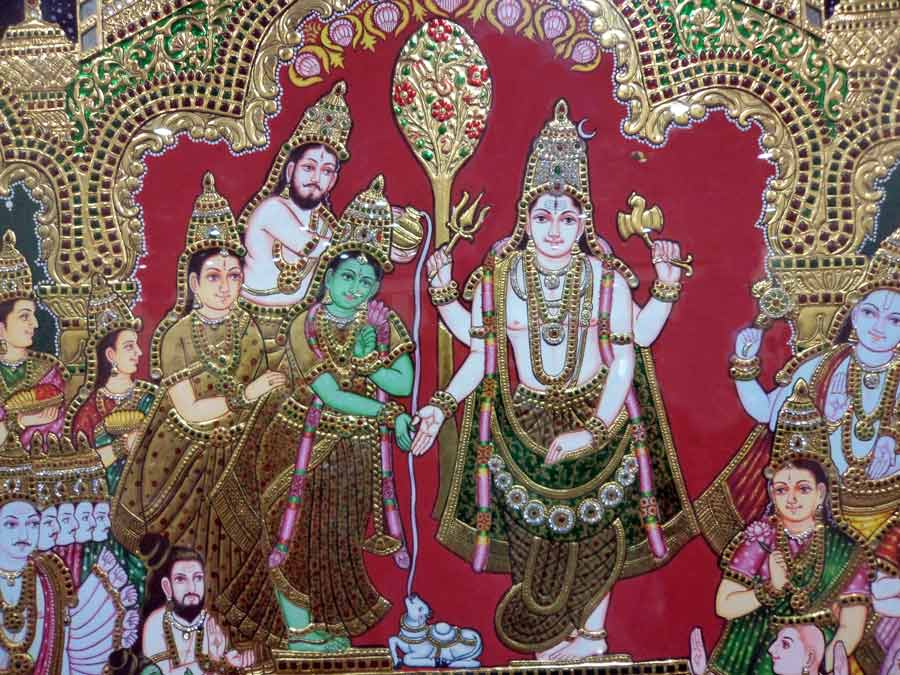
I refer to The Radiance Sutras as a 'version’ rather than a ‘translation’ because I am following a different set of rules than those developed by
Indologists and those engaged in historical criticism. I am seeking to let the liveliness of the original Sanskrit come across, using the root images and
metaphors in each word. In the Monier-Williams Sanskrit-English Dictionary (1899), the definitions, elicited from native lexicographers during the latter
half of the 19th century, are full of interesting metaphors and images that give direction and hints relevant to the yoga practice being presented. For
example, consider these metaphor-packed dictionary listings, at your leisure (italics are mine, and the definitions are abbreviated):
Laya - the act of sticking or clinging to, to become attached to any one, to disappear, be dissolved or absorbed, to hide or conceal one’s self. Lying
down. Melting, dissolution, disappearance or absorption in. Rest, repose. Place of rest, residence, house, dwelling. Mental inactivity, spiritual
indifference. Sport, diversion, merriness. Delight in anything. An embrace. In music - time, a kind of measure. The union of song, dance, and instrumental
music. A pause. A swoon. Merge.
Bhū - to become, be, arise, come into being, exist, be found, live, stay, abide. To cherish, animate, enliven, refresh, encourage, promote, further. To
addict or devote oneself to, practice. To manifest, exhibit, show. Becoming, being, existing, springing, arising. The place of being, space, world, or
universe. The earth, ground. Soil. Floor. Pavement. A spot or piece of ground.
Prakāśa - visible, shining, bright. Clear, manifest, open, public. Pronouncing a name out loud. Expanded. Universally noted, famous, celebrated for.
Openly, publicly, before the eyes of all. Clearness, brightness, splendor, luster, light. Elucidation, explanation, display. Manifestation, expansion,
diffusion. Glory. Sunshine, open spot or air. The gloss on the upper part of a (horse’s) body. The messengers of Vishnu. Laughter.
Yuj - to yoke or join or fasten or harness (horses or a chariot), to make ready, set to work, use, employ, to equip an army. To offer, perform (prayers, a
sacrifice). To put arrows on a bow-string. To fix in, insert, inject (semen). To turn or direct or fix or concentrate the mind, thoughts upon. To
concentrate the mind in order to obtain union with the Universal Spirit, be absorbed in meditation. To join, unite, connect, bring together (to be
attached, cleave to). To join one’s self to. In astronomy, to come into union or conjunction with. To be united in marriage. To urge or impel to. To
encompass, embrace. Exciting. Being in couples or pairs.
Each word is a poem and wants to become a song. Each word may have a meaning in meditation, and also in music, dance, astrology, astronomy, alchemy, sex,
prayers, and something to do with horses. You could make a song lyric out of a single definition. All the above definitions are shortened for ease of
reading, and the full definitions contain lots of opposites, so if love is mentioned, and melting and merging, then so is dying. If surrender is mentioned,
so is control and domination. It’s the stuff of modern pop songs, Country Western, musicals, Rap and Hip Hop.
With such rich polysemy, hundreds of very different translations could be done. This is intentional. The Sanskrit of the text is constructed so that you
could translate it afresh every day for a lifetime and continue to see new meaning. I often do thirty to forty different translations and let the text sing
itself into something lively. This often takes several months in which I am doing nothing except chanting the Sanskrit of this brief text all day, from 4
in the morning until dawn, and then for several more hours before noon, and again in the afternoon. I ask the Sanskrit of the text to repeat itself like a
prayer of the heart, and I listen to the pulsation and the music of it. I am usually standing and walking around while doing this - you can only go so far
with a text like this if you are sitting at a desk. The text definitely wants to be danced to and to jump off the page into performance of some kind.
A listener to the Vijnana Bhairava Tantra who was aware of the meanings of these words, would have a vast and ever-surprising range of associations flowing
in her mind as she heard these being chanted, even for the thousandth time. There are plays of sound in the words themselves, and rhythms of vision, for if
you know the images in each word, moving pictures flicker and flow continually as the Sanskrit flows, making a unique movie upon each hearing. Resonance
reaches far and wide, setting whole fields of ideas and experiences vibrating, invoking myths, epics, conversations (Upanishads) and hilarious stories.
In her initial questions that invoke the conversation, Devi uses the term para, which is defined as ‘the Universal Soul, far, distant, opposite, previous
(in time), ancient, past, future, next, the name of a sound in the first of its four stages, the wider or more extended or remoter meaning of a word’.
Therefore in decoding the conversation, we make use of the wider meanings of all the words, as indicated in the industry-standard dictionary.
The real translation is when the words jump off the page onto your tongue and light up your eyes and your heart. And the translation continues when you are
able to engage with your yoga practice with a bit more love and liveliness.
The Heart of Space
Let’s look at one of the stanzas, verse 32 of the text, and the 9th practice given by Bhairava.
śikhipakṣaiś citrarūpair maṇḍalaiḥ śūnyapañcakam |
dhyāyato'nuttare śūnye praveśo hṛdaye bhavet
The Lakshman Joo and Paul Reps translation in Zen Flesh, Zen Bones reads like this:
‘Imagine the five-colored circles of the peacock tail to be your five senses in illimitable space. Now let their beauty melt within. Similarly, at any
point in space or on a wall until the point dissolves. Then your wish for another comes true.’
The Jaideva Singh translation in Vijnanabhairava or Divine Consciousness, A Treasury of 112 Types of Yoga (Delhi: Motilal Banarsidass, 1979) is this:
‘The yogi should meditate in his heart on the five voids of the five senses which are like the five voids appearing in the circles of motley feathers of
peacocks. Thus he will be absorbed in the Absolute void.’
If we look at the definitions of each word, we see a rich cluster of improbable images, suggesting the possibility of offering a juicier version of this
stanza.
Sikhi, the first word of this verse, is listed in the Monier-Williams as ‘A peacock. A name of Indra. The god of love.’ Taking the hint, we see that the
peacock is the national bird of India, a symbol of grace, pride, joy, and extravagant beauty; Indra is the god of the senses, and this makes sense because
the teaching is about the senses. Indriya is ‘fit or agreeable to Indra, a companion of Indra, bodily power, power of the senses.’ ‘The god of love’ may
refer to Krishna, who is depicted as having a peacock feather in his crown. The Hare Krishnas say peacocks are “evidence of the sublimely spiritual quality
inherent within material beauty.” Another hint is that peacock feathers are sometimes used in Shaktipat, a transmission of divine energy, from the teacher
to the student, in the tradition of this text. The goddess Saraswati is sometimes portrayed with a peacock at her side.
Paksa (pakṣa) - a wing, pinion. A feather, the feathers on both sides of an arrow. The fin of a fish. The shoulder. The flank or side or the half of
anything. The half of a lunar month. A limb or member of the body. In algebra, a primary division or the side of an equation in a primary division. The
feathers of the tail of a peacock, a tail, purity, perfection.
Looking into the appeal of peacock feathers, we find that they are prized all over the world for their beauty, and because peacocks shed their feathers
every year, they can be obtained without harming the bird. Furthermore, peacock feathers are iridescent – the colors move as the observer moves. The
iridescence in peacock feathers is not due to pigments, but is the manifestation of intricate tiny crystal structures that reflect some wavelengths and
filter others.
Searching further afield in the Monier-Williams, we see that there are 208 Sanskrit words with ‘peacock’ in the definition, implying that this visual image
is important and embedded in many aspects of the lexicon, and mythology, and iconography. Cakra – wheel, the circle on a peacock’s tail; candra – shining,
the moon, the eye in a peacock’s tail; jivatha – long-lived, life, breath, a peacock; and over two hundred others. The peacock is a vahana, one of the
animals the Goddesses and Gods ride (vāhana – ‘the act of making effort, drawing, bearing, carrying, conveying, bringing, any vehicle or conveyance or
draught-animal.’) Other vahanas include the bull, swan, buffalo, elephant, mouse, horse, dog, tiger, parrot, and so on.
Citra - excellent, bright, clear, variegated, speckled, extraordinary appearance, the ether, sky, strange, wonderful, variety of color, picture, sketch;
punning in the form of question and answer.
Rupa - outward appearance, phenomenon, color, shape, figure, dreamy or phantom shapes, loveliness, grace, beauty, splendor, nature, character, peculiarity,
image, reflection, mode, manner, way, trace of; a show, play, drama, a remark made under particular circumstances when the action is at its height; a
sound, word.
Mandala - circular, round, the path or orbit of a heavenly body, a halo around the sun or moon, a division or book of the Rig Veda.
Sunya - empty, void, hollow, desolate, deserted, vacant, vacuum, desert, space, heaven, atmosphere.
Pancha - five. Refers to the five voids and the source of the five senses: gandha, smell; rasa, taste; rupa, vision; sparsa, touch; shabda, hearing.
Dhyana - meditation, thought, reflection.
Anuttare - follow to the end; the Supreme, the Absolute. The Highest Reality, both transcendental and immanent. In the tradition of this text, anuttara
refers to ‘The Supreme heart of Shiva’, and Anuttara Shakti is the pulsation, the spanda, of the Highest Creative Consciousness.
Pravesha - entering, a place of entrance, a door, entrance on the stage, entrance of the sun into a sign of the zodiac, employment, use, income, intentness
on an object, engaging closely in a pursuit or purpose, manner, method.
Hrdaya - the heart (or region of the heart as the seat of feelings and sensations), soul, mind (as the center of mental operations); the heart or interior
of the body, the heart or center or core or essence or best or dearest or most secret part of anything. True or divine knowledge, the veda. Science.
Bhavet - becomes, representing a possibility, a hoped-for state, a potential, ‘It could become’. Bhava is ‘becoming, being, existing, turning or transition
into, true condition, reality, manner of being, temperament, any state of mind or body, way of thinking or feeling, sentiment, intention, love, affection,
attachment; the seat of the feelings or affections, heart, soul, mind; wanton sport, dalliance.’
Whew. Reading this glossary, even for the five hundredth time, just flattens me. How could anyone possibly pack so much meaning into thirty-two syllables,
thirteen or fourteen seconds of chanting? Oversimplified, the instruction is “meditate on the five voids — the five voids that are the ultimate sources of
the five senses. Follow them to the end, and enter the heart.” Reverse-engineering the sentence, we could say, “The Supreme Heart of I AM consciousness is
right here, in the heavenly space inside of your senses.”
There are thousands of techniques here. Explore each and every one of your senses — hearing, touch, taste, smell, vision — individually and in combination.
Find the hrdya, ‘that which captivates your heart’, in each sense, to make it interesting. Learn to follow each sense beyond itself into shunya - space,
heaven. Whatever your practice — pranayama, asana, mantra, visualizations, meditating on the chakras — follow your sensuous experience into the beyond, and
be at home in the Heart of Space. An iridescent, shimmering beauty appears when you are perceiving spaciousness simultaneously with the sensuous, the
transcendent with the immanent.
Hrdya is also the name of ‘an intoxicating drink made from honey or the blossoms of Bassia Latifolia,’ (an Indian tropical tree.) This refers to the
nourishing, delicious quality that arises in us as we practice gratefulness. The nectar of gratitude sustains us on our journey. There is also a blessing
and a warning: hrdya is a divine drunken quality that comes from living in the heart, a sober intoxication that emerges from seeing eternity shining
through this fleeting moment.
This sutra is saying, “You want initiation? You are longing to experience the Grace of God? The feather of initiation is always touching your forehead. God
is always here, inside your moment-by-moment experience, inviting you to receive the transmission of divine electricity that awakens you to live in your
essence.”
Taking all of these hints, metaphors, and images, and playing with them, we could say:
The senses declare an outrageous world —
Sounds and scents, ravishing colors and shapes,
Ever-changing skies, iridescent reflections —
All these beautiful surfaces
Decorating vibrant emptiness.
The god of love is courting you.
Every perception is an invitation into revelation.
Hearing, seeing, smelling, tasting, touching —
Ways of knowing creation,
Transmissions of electric realization.
The deepest reality is always right here.
Encircled by splendor,
In the center of the sphere,
Meditate where the body thrills
To currents of intimate communion.
Follow your senses to the end and beyond —
Into the heart of space.